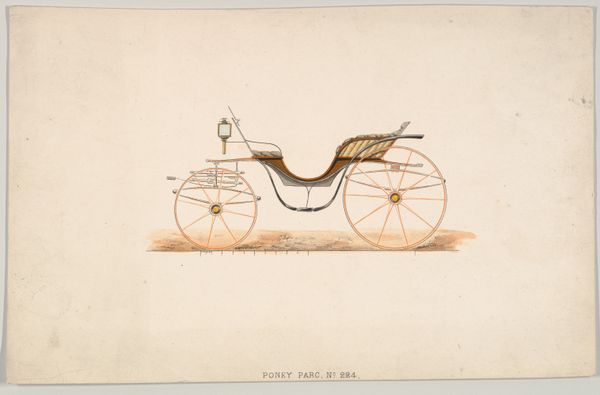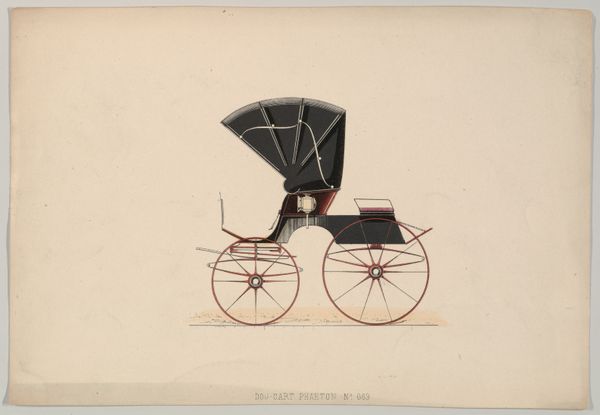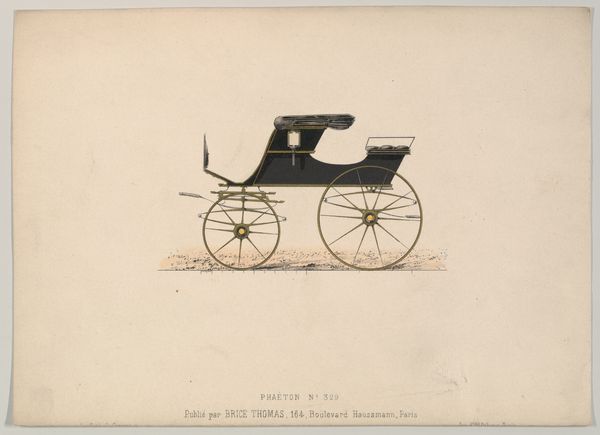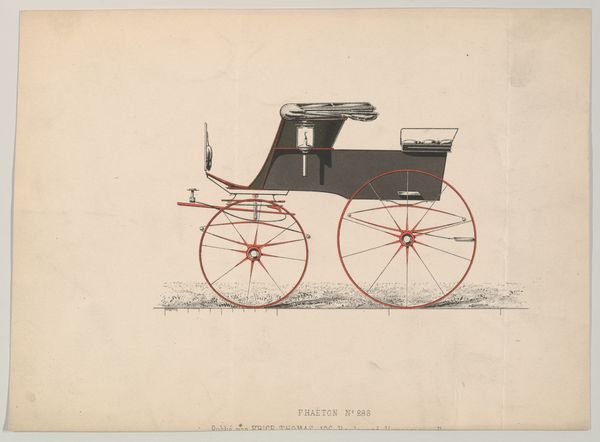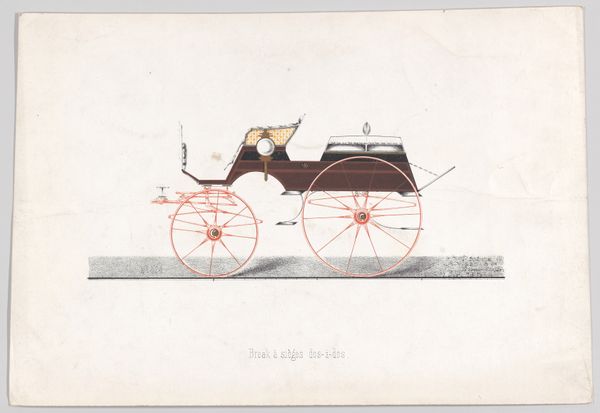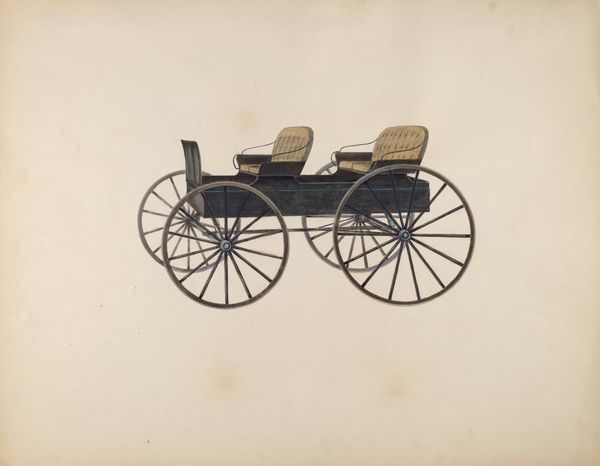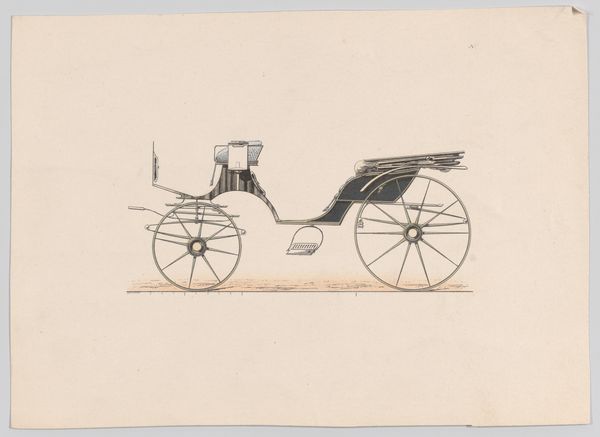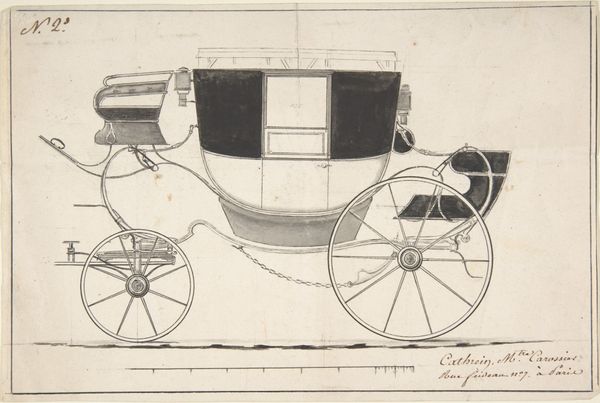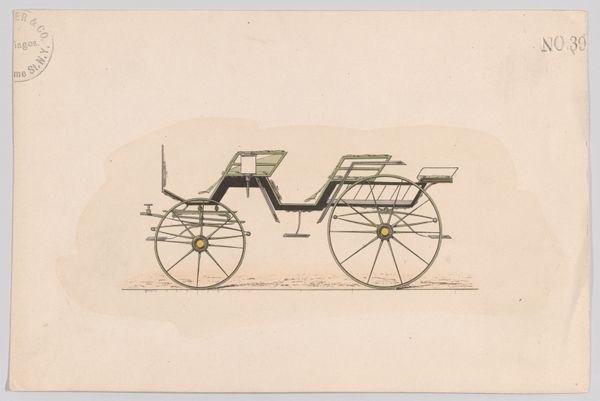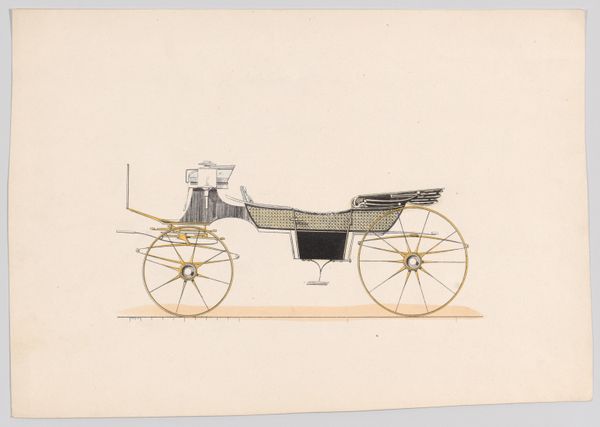
drawing, print, watercolor
#
drawing
# print
#
caricature
#
watercolor
#
decorative-art
#
watercolor
Dimensions: sheet: 6 x 9 in. (15.2 x 22.9 cm)
Copyright: Public Domain
This is a design for a phaeton carriage, number six in a series, produced in New York, likely in the late 19th century, by John C. Parker & Co. The meticulous rendering speaks to a burgeoning culture of industrial design where aesthetics were becoming as important as function, but this was not a universal phenomenon. Carriage designs like this reflect a particular social class, the wealthy, who could afford such personalized transport. The very name ‘phaeton’ is a cultural reference, alluding to classical mythology and the story of Phaeton, son of Helios, who nearly set the earth ablaze while driving the sun chariot. This association with speed and perhaps recklessness would have appealed to the leisure class, eager to display their wealth and status through fashionable vehicles. To fully understand the context of this design, we might turn to trade catalogs, historical records of transportation, and social histories of the Gilded Age. The meaning of art, even something as seemingly functional as a carriage design, is always tied to its social and institutional setting.
Comments
No comments
Be the first to comment and join the conversation on the ultimate creative platform.
